Monstress: World-Building With a Feminist Twist
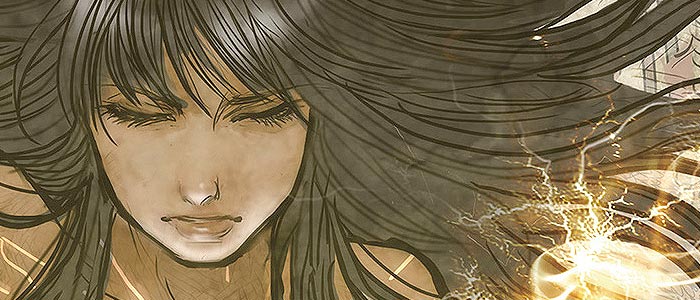
Marjorie Liu and Sana Takeda’s award-winning Monstress (2015 to present) from Image Comics has received rave reviews from critics and fans alike for its fascinating characters, engrossing political intrigue, and manga-inspired art. Set in a matriarchal fantasy/steampunk world inspired by early 20th century Asia, the comic follows the adventure of Maika Halfwolf who is host to a mysterious demon with a ravenous appetite. Accompanied by Kippa, a little “fox” girl and Master Ren, a talking cat, Maika sets off in a quest to uncover her past and understand her legacy, while facing constant dangers from various groups who are all vying for her monstrous powers.
Monstress stands out due to its ambitious world-building à la Tolkien and George R. R. Martin as well as its no-holds-barred depiction of a brutal female-centric human/animal hybrid world. These creative decisions taken by Liu and Takeda have allowed, in effect, for the exploration of gender, sexual and racial dynamics through a unique lens. This text will analyze these artistic choices and their role in building a new ground for conversations surrounding female representations and the place of feminism in comics.
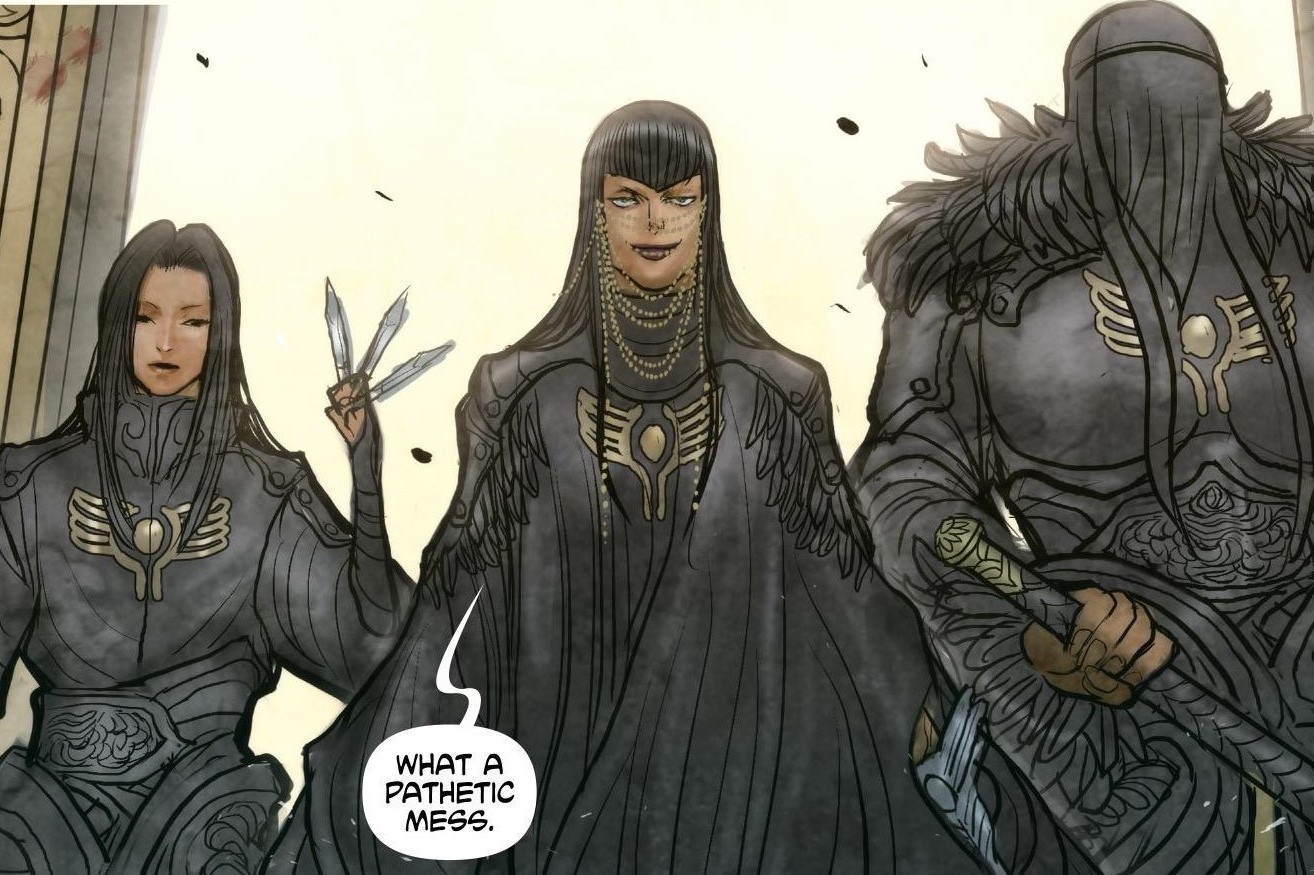
Bypassing Binarism
With two female rising stars of the industry at the helm, an overpowered foul-mouthed female protagonist and a conspicuous absence of male characters, it is easy to assume that Monstress ticks all the necessary boxes to be a flag-bearer of the feminist movement. But the comic’s nuanced approach to issues of representation deserves more credits as it manages to break away from the binary approach which dominates comparative situations.
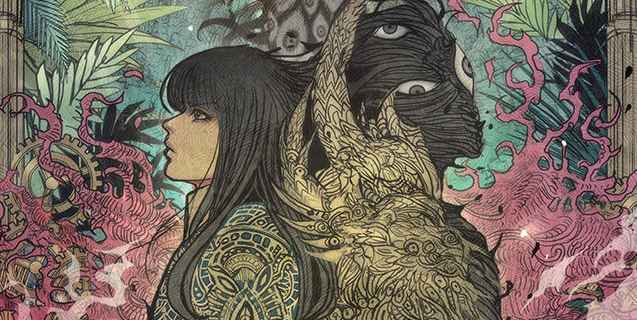
Modern Western thinking has the tendency to favor a dualist framework when it comes to comparisons. For instance, contemporary debates tend to be reduced to two sides: hero vs. villain, Black vs White or the man vs woman. Such dualism is not inherently wrong because it is, after all, a cognitive imperative of human nature, as explained by Susan Stanford Friedman in “Why not compare” (2001). 1 Humans will instinctively base their perspectives on a known set of knowledge out of familiarity and practicality. Think of how marketing campaigns often package the message of a simple comparison to an already known product (this text is definitely guilty of such practice). But the main issue according to Friedman is when binary comparison becomes the norm. Instead of proceeding with compare and contrast, the whole practice can turn into a matter of judging and choosing. Binary comparisons, unfortunately, favour dominant values and standards. So, in order to disrupt the monopoly, Friedman suggests cultural collage or relationality.
Inspired by Edouard Glissant’s Poetics of relations 2, relational comparison focuses on factors that create links among cultural products, which would otherwise never be put in dialogue. In the context of Glissant’s text, French literature would create a power structure whereby every literary text coming from the former/current colonies would be evaluated, criticized, consumed, accessed and marketed according to the standards established by French critics and academics. The centre/periphery dynamic invariably promoted one-way dissemination of information and culture, but with relationality, Glissant argues that non-dominant groups can attempt to add their voices to the mix. Consequently, the periphery can now reach the centre as easily as the other way around and most importantly, the peripheries can reach each other. Glissant understands that relationality is not a solution to break the monopoly of conventional comparison but it gives a platform for others to navigate and maneuver away from the default framework.
Therefore, in order to fully appreciate Montress’ contribution to the topic of female representation in comics, this text will adopt relationality as the comparative methodology.
Relational Arc
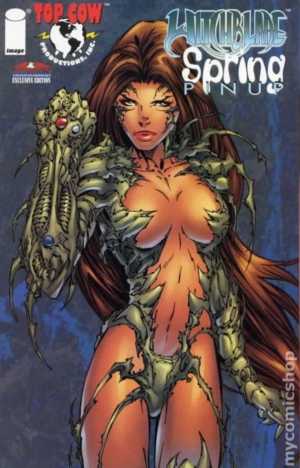
The plot concocted by Liu and Takeda is not by any means, ground-breaking since the story of an amnesiac anti-hero with uncontrollable power is a common trope found in manga or fantasy work. However, by exploiting this familiar arc, the cartoonists shine the spotlight on their western/eastern fusion world. The relational approach removes the focus on Maika in the sense that readers are not immediately preoccupied with her character building, but rather with the world that has shaped her. As the title and opening chapters would suggest, Maika fits into the character trope which is already familiar to comic book readers and is equally accessible to newcomers, but unbeknownst to them are the elements which dictate her actions amidst the political struggles occurring in her world.
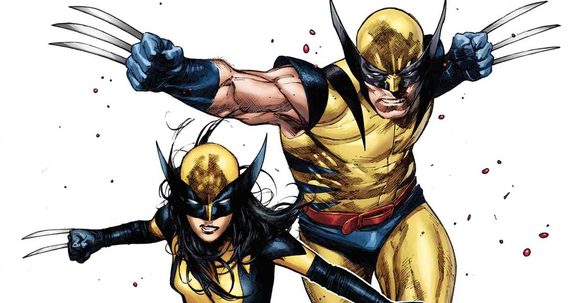
Maika’s arc is reminiscent of Wolverine’s, the iconic Mutant from Marvel who similarly struggles to repress his berserker instinct while coincidentally caring for a younger sidekick (multiple ones in his case with Jubilee, Kitty Pryde, X-23). Likewise, Maika’s story bears some resemblances to Top Cow’s Witchblade, especially in regards to the mysterious weapon attached to the arm (albeit a more clothed version). In short, there is an abundance of works from which comic book fans can draw comparisons but ultimately, Monstress maintains its unique voice in part thanks to its world-building.
Reshuffling Battle Codes
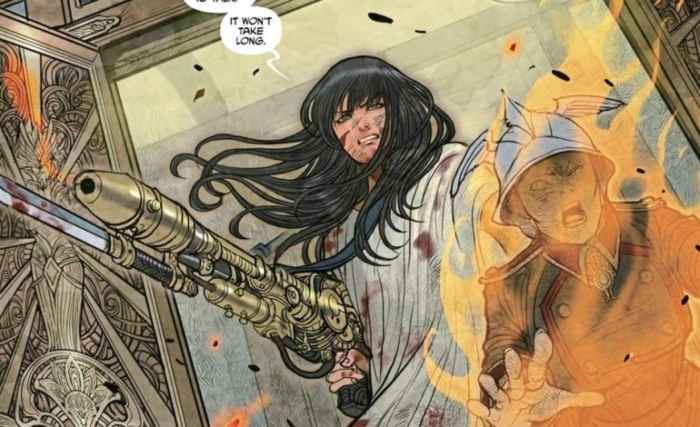
The matriarchal nature of the universe is evident fairly early in the comic. It is clear that, even though there are glimpses of male characters, the main focus is set on the women of that world. The more interactions Maika has, the more the readers understand that women occupy dominant and revered positions in the society: from the slavemasters and chief scientists, to soldiers and the prison warden. It is therefore logical that the female characters are also the main perpetrators of cruelty, exploitation, and violence. They occupy the roles of the antagonists and this creative decision disrupts the binary setting whereupon men are seen as the automatic enemies of women. Monstress is somewhat refreshing in assuming the full matriarchal nature of its world and purposely remove male characters from the roles of the villains, grunts or cannon fodder – they are simply set aside.
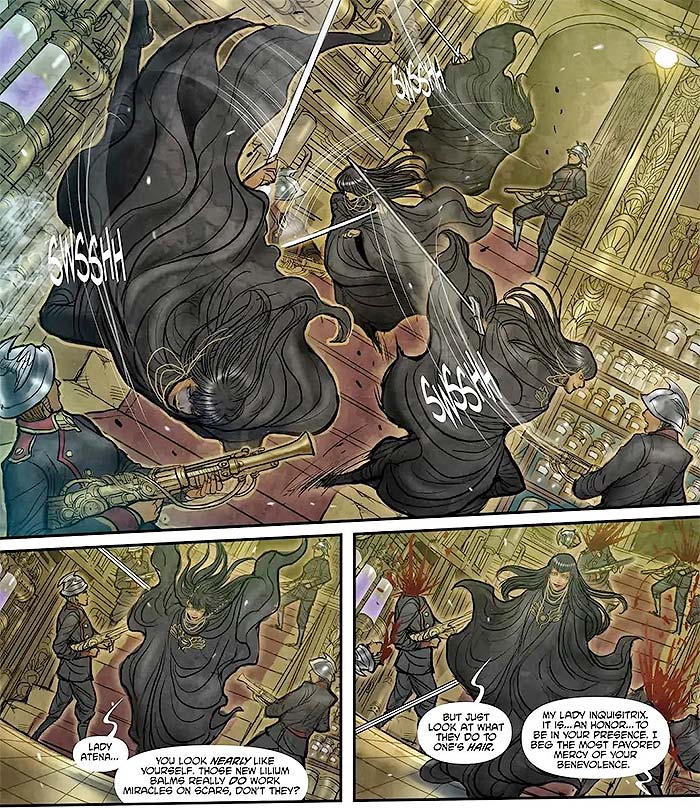
Instead, we are confronted with gruesome sequences of violence among female characters. Graphic fight scenes among female characters are nothing new, but it can be argued that the intensity displayed in the sequences from Monstress helps break down the clichés of female combat scenes. More often, defeating male characters acts as a barometer to show how strong a woman is. By removing such standard, Liu and Takeda withdraw the agency of measuring Maika’s “badassery” in relation to her achievements against male counterparts.
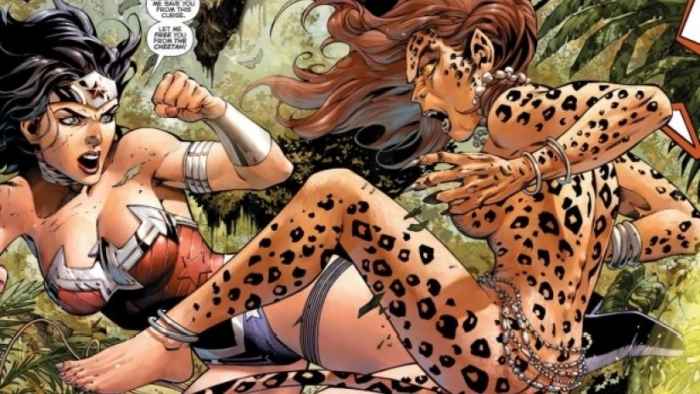
Another stereotype the cartoonists avoid concerns the relationship between the level of attractiveness and the ferocity of the battle. Simply put, fight scenes involving only women tend to be sanitized and even worse, sexualized especially if the characters are good looking. For example, Wonder Woman’s battles against Cheetah are always strangely toned down considering the power level of both. Big hits are allowed, but rarely to the point of dismembering or disfiguring each other as you would expect from a male-on-male or even male-on-female fight sequences. Therefore, to see Maika incinerate and stab female characters regardless of their good looks is quite a departure from the traditional codes of violence involving female characters. It has to be noted that Monstress is not the only comic out there challenging such trope (for example Greg Rucka’s and Michael Lark’s Lazarus or Norihiro Yagi’s Claymore), but the key remains that the matriarchal society places female characters at the forefront of everything. So, when Maika is willing to kill anyone standing on her path regardless of their gender, race or class, it disrupts the stereotypical expectations of how girls and women should react in the face of violence.
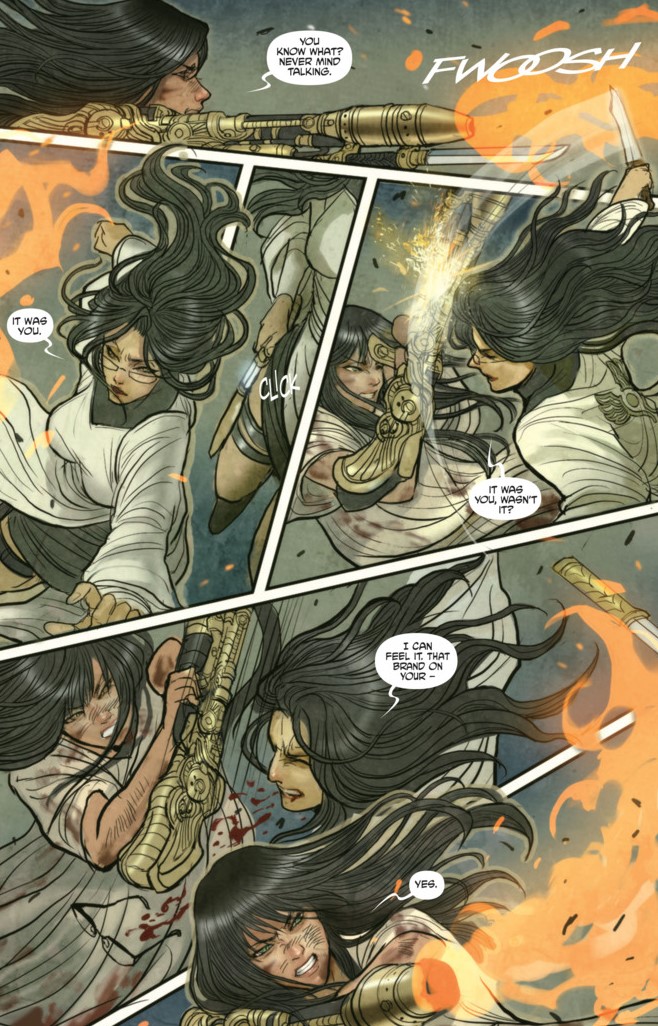
Challenging Heteronormativity
The female-centric universe also provides the opportunity to question sexual dynamics. From a binary perspective, it may be tempting to assume that Monstress challenges heterosexuality with the numerous same-sex relationships involving several main characters. But once again, Liu and Takeda go beyond dualism.
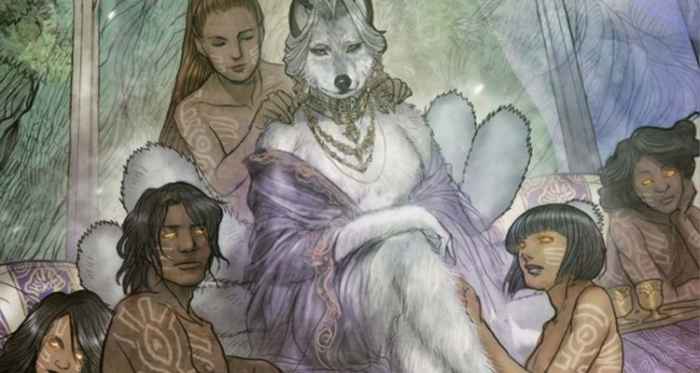
They make a point of showing homosexuality but they certainly do not imply that it is the dominant form of sexual orientation. If anything, it seems that same-sex relationships are experienced mostly by the higher class of the matriarchal society. Though not stated explicitly but implied by the esteemed Professor Tam Tam’s explanations (a cat professor), heterosexuality led to miscegenation which in turn, brought to civil wars among the various races. The use of the term “breed” in regards to the history of the Arcanics (half-breeds of Ancients and humans) sets the tone regarding the society’s views on interracial relationships and suggests that this racial group is nothing more of a pariah as it was “breeding” too fast. Another possible reading of the context is the fact that love can only be found in same-sex unions. At several occasions, heterosexuality is linked to reproduction and lust with love completely left out of the equation while we witness various intimate and emotional moments among the female characters. But in chapter 20, readers witness the strategic and clearly loveless marriage of the two female leaders of the Arcanic courts to avoid further bloodshed.
To indirectly add fuel to this argument, characters in Monstress seem to treat motherhood as either a weakness or a political tool. Liu and Takeda make a point of balancing the representation of mothers in their work, but they do not hesitate to tackle the misrepresentation of women as instinctive loving mothers starting with the fact that Maika was conceived on the basis of an experiment. We witness the brutal ways Moriko (the mother) raises Maika with the excuse of preparing her for life and ironically, it is Seizi (male tiger Arcanic and godfather) who shows more compassion and parental instincts. In fact, it is telling that Maika allows herself to be vulnerable in his presence – the other person being Tuya, her childhood friend/love interest.
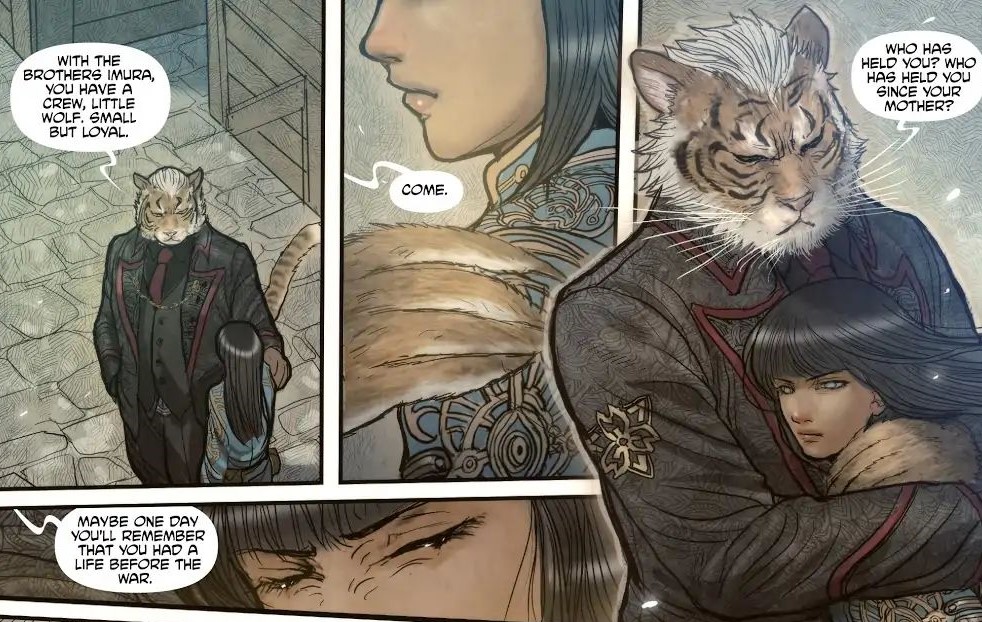
Liu and Takeda’s depiction of motherhood in the matriarchal society makes the readers question the concept of women as natural caregivers, an image rationalized by heteronormativity. In the surrounding where they are not playing second fiddle to men, women are in control of their bodies but it does not mean that the conversation is over and that the feminists have won. More than that, the cartoonists want to challenge the readers’ perception of motherhood, making sure on one hand, not to demonize it and on the other hand, not to dismiss the stakes linked with it.
Gender Fluidity
Monstress‘ world also allows Liu and Takeda to experiment with gender identity. In this case, the way they conceived the character of Zinn, the monster host, merits attention.
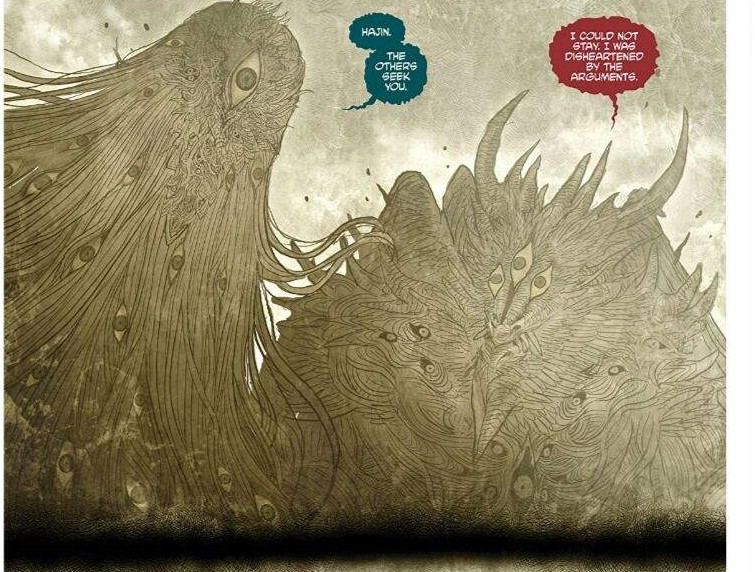
Interestingly, the parasite inhabiting Maika’s body is ungendered. With a unisex name of Zinn, Liu purposely keeps that side of the identity secret. In dialogues, the writer is careful to always use the pronoun “I” or “you”, specifically avoiding “he/she” and when referring to other Gods, Zinn is seen using my “sister/brother”. This unconventional take adds to the approach preferred by Liu and Takeda of bypassing binarism. Distorting the representations of gender dynamics, especially in regards to a God such as Zinn, allows the cartoonists to experiment with the importance of gender in our society and religious beliefs. The main modern religions of the world are largely dominated by the worship of male gods but when thoroughly analyzed, it is noticeable in each religion that some deities or concepts straddle the gender line with the reference to a divine gender or the use of genderless pronouns to describe the actions of their Gods. In the case of Hinduism or Shintoism for example, the conceptualization of gender goes beyond binarism to the point that being genderless is part of their identities.
In a Western/Eastern fusion world, it is, therefore, an opportunity to mix the beliefs of numerous religions, bring up issues which may not be otherwise discussed in a conventional world and above all, transcend the dualism favoured by the modern society. This fresh take on gender dynamics is perhaps more readily accepted by readers thanks to the world where Monstress is set, where every convention is challenged and dictated by the female-centric world – even for the Gods.
Monstress deserves to be lauded as a feminist comic book, not only for shining a positive light on powerful female characters in a female-dominated environment, but instead for tackling common misrepresentations in regards to women and girls. Liu and Takeda have woven an extraordinary world with unique characters inhabiting it and thanks to their artistry and creativity, they rise beyond the binary nature of conversations around female representations in comics and popular culture.
As Claire Landsbaum from Vulture 3 would aptly state:
“As a story told by women about women, Monstress is relatively unique in the comics landscape. It’s an engrossing story, but it’s also a signal flare for how women ought to be represented: as diverse, complex individuals whose stories build on, and move beyond, misrepresentation, rather than repeating it.” (2016)
Works Cited
- Friedman, Susan Stanford. “Why not compare?” PMLA, Vol. 126, No. 3, May 2011, pp. 753- 762. ↩
- Glissant, Edouard, Poetics of Relation, Ann Arbor: The University of Michigan Press, (1990 French Version), 1997 (English translation), Epigraph, pp- 4-9, 23-35; 141-57; 205-09. ↩
- Landsbaum, Claire. “The Bloody Comic Monstress Is a Response to Game of Thrones, Ex Machina, and The Smurfs.” Vulture. Sequential Art. July 22, 2016. ↩
What do you think? Leave a comment.

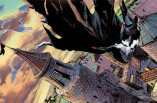
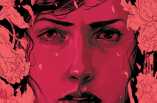
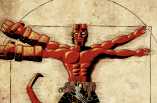

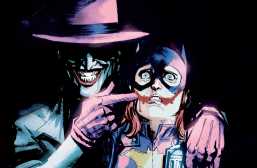
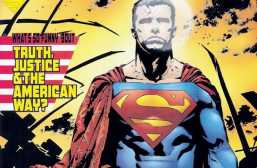
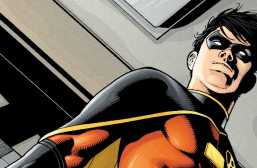
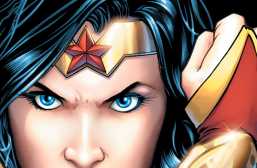
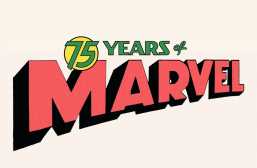
I’m a graphic-novel virgin, so I don’t have any opinions. But I love how you compiled this article. Amazing work!
Thank you! Glad that you enjoyed it.
Monstress really had potential but the stiff, robotic cringe dialogue and unrelatability of the protagonist left me cold as ice.
I agree with you about Maiko. To be honest, Issue 1 did not convince me at all but the world building and the side characters kept me around. I absolutely love Master Ren the cat.
*Maika
I have seen this before with certain comics – readers get seduced into a poorly written story by insanely beautiful art.
Wonderful piece. Have you read Rachel Rising by Terry Moore? I love the artwork, the dialogue is brilliant, the characters are well fleshed out and the story is wonderfully strange.
Not yet. But thank you for the recommendation!
Like this article highlights, I think what a good amount of people find interesting about this book could be the matriarchal society. It is interesting actually but in this universe it seems as if the women are the heavy lifters, they make up all of the guards and warriors (with exceptions such as Corvin) as well as the leaders of the world. In fact in volume 2 they actually use she as a gender neutral pronoun in the same way that we would use he as one “She who dares tread the waters of blah blah blah”.
So I think that particular theme for a lot of people can be very intriguing. For me however I just think that the writing is chaotic, messy and even childish at points. In the end I just want more of Kippa, the precious fox girl, and also character I care about (for some reason).
Kippa is definitely the most interesting character compared to Maiko’s blandness. I agree about the writing, especially in the first couple of issues, but it gets better as the series moves on and I partly believe that it is due to other characters taking bigger roles.
*Maika
I don’t necessarily think it has feminist overtones per se, because feminism is about bringing women up to the same respect and status of men. In monstress, the women are already the ones who wield all the power, so more matriarchy and female supremacy
Monstress series is one of my favorite series!
I was very happy when the series won an Eisner award!
Is it political?
It depends on how you approach the series. There is definitely a political undertone with the matriarchal society but I enjoy the experimentation with the role reversal.
Monstress is definitely a feminist book, but it’s not a particularly political book, and if it is it’s due to its overt anti-war themes.
Monstress is a fantastic fantasy series that is doing a lot of things. There’s a ton of world building, interesting characters, and history that’s been developed over the current issues, and a plot that is slowly but surely unravelling. That and Sana Takeda’s fantastic art are I think the biggest reason the book is so good. It’s like this awesome love child of Fullmetal Alchemist and Game of Thrones. (BTW, anyone who is a fan of this should check out FMA. It’s fantastic).
There just happens to be a feminist angle as well, which works quite well for the book, and primarily for one simple reason. Every character is treated as a person and not a gender. The subject of gender I don’t think is even brought up once. There’s no “mansplaining” jokes, no “women are the best, hurrah!” moments. Just the characters dealing with all the shit the world has to dish out for them.
Could the argument be made that Monstress is political at all? Sure, but that’s because it’s anti-war and POW themes are such a huge part of the world and the main character, Maika. Just about every character has talked about something they’ve lost during “the war”, and we see first hand a lot of different ways that the recent war has affected the world as a whole. Again, all of this while the topic of gender hasn’t even been brought up once. Lui has even said in an interview that she took a lot of inspiration from her grandparents who had to live in POW camps for years, and came out different people. I frankly see a lot more of that in the book then I do any feminist messages.
Does any of this really matter at the end of the day? Not particularly in my opinion. Like I said, Monstress I believe owes all its strengths to the story, world building, characters, fantastic art, and all those things that makes any good story a good story. But the opinions stated above are also definitely a purposeful part of the books DNA, so it’s worth acknowledging at least.
It also is easily one of my favourite series coming out right now, and if it plays its cards right will end up one of my favourite fantasy series of all time, so discussing it is nice.
I have to admit that I did not think about the series through the anti-war lens. Thanks for bringing it up!
“There just happens to be a feminist angle as well”
It didn’t just happen to be, Liu is pretty vocal about being a feminist. I’m pretty sure if you asked her, being anti-war and worried about POW rights are feminist politics. Not only is her book politically feminist in a narrative sense, but also politically feminist for just existing. OP’s review draws a couple of quotes from this interview. Yes, Liu is drawing from her grandmother’s experience of Japanese-occupied China, but she’s writing about women from a feminist perspective. To Liu, feminism and its politics are more than mansplaining jokes and women-are-the-best-hurrah moments.
This is a fantastic, well written article! Your thoughts on heteronormativity and gender fluidity in relation to the comic are quite thought-provoking. I’ve yet to read Monstress, but now I really want to! Thank you for sharing this with us.
Thank you very much! Just a heads up, volume 1 of the series is quite slow but it really picks up in volume 2.
Monstress is FUCKING GORGEOUS, and the story is absolutely incredible.
Liu and Takeda sure deliver!
After reading monstress I didnt find anything that came close in terms of artstyle … I just bought lady mechanicka … didnt read it yet though…
Always good to read a piece on this feminist comic.
I am hoping to analyze this comic further as it progresses. No promises, but I would love to write more on it.
Any other good feminist work to read?
It may not be for everyone, but I enjoyed reading Kelly Sue Deconnick and Valentine De Landro’s Bitch Planet.
https://imagecomics.com/comics/series/bitch-planet
1. The Nameless City by Faith Erin Hicks
2. Spider-Woman by Dennis Hopeless, Javier Rodriguez, Veronica Fish, & others
3. The Mighty Thor by Jason Aaron and Russell Dauterman
Some non-fantasy stuff:
* Fun Home by Alison Bechdel
* The Diary of a Teenage Girl by Phoebe Gloeckner
* Persepolis by Marjane Satrapi
One of my all time favorites. It is not standard linear storytelling. It’s a fairly complex story where the details (that you wanted) are slowly revealed as the story progresses. So, this actually makes the story even better, since it also becomes a mystery.
The storytelling is a double-edged sword for me. I found it dry and uninspiring in the beginning but I definitely agree with you that as the story progresses, the pay-off is actually amazing!
I’m currently both writing and illustrating my own graphic novel and I hope that one day it can be analysed by someone as perceptive as you. <3
Thank you! Good luck with your own work. Let us know when it is coming out.
I dropped this one for some time back. Might pick it up again.
I don’t blame you. The first couple of issues are not crazy amazing but the series picks up momentum super fast after that.
People keep telling me to continue on with Monstress and say that it gets better. I’m willing to move forward with it, but part of me feels like one should not have to have the “keep investing in this because it gets better” attitude with comic or any other books. There are plenty of books out there that have incredible appeal from issue 1, i.e., Southern Bastards, Black Monday Murders, Grass Kings, etc… I picked those up and never looked back. I have seen some interviews with Marjorie Liu and she does seem like a very lovely person. I respect the effort and the work that she has put into the creation of the book, and there is clearly an audience for it. I’m not sure that audience is me.
Read it again. You just gotta have patience with it and read it on its own terms. Sure it takes some effort at times but it pays off if you relax into it and go for the ride. Vol 2 and 3 really start to pay off. Give it another shot. It didn’t win 4 Eisners for no reason.
Difficult to keep track of so many characters who aren’t really well developed. I have carried on with it because of the truly sublime artwork, which will always have me coming back for more. The artist truly takes joy in her drawings of these brilliant female characters and beautiful arcanic creatures.
Simply put: Females are equal to Males. No debate is necessary at all.
P.S : I do love intelligent and mysterious female characters!
Anyone who enjoys this should read Brian Reed and Sana Takeda’s Ms. Marvel run. It has everything good about this series.
Thanks for the recommendation!
I loved Monstress but before this I hadn’t read a graphic novel since probably Sandman twenty years ago.
I appreciate the fact that this story has an array of characters who aren’t monochromatic and that it includes elements of folklore and myths that aren’t from the usual found in western fantasy. As well as a protagonist who is as flawed, as she is vicious.
I really like the design of the pirates and the Arcanics.
Based on this article, it seems like the real point of this comic book is to challenge the idea that there should be anything strange at all about having a female character in any typical fantasy role. Which, in and of itself, seems like something to admire.
Really good comic. I’m not saying it’s perfect but I am saying that it is a good read though, it probably won’t be everyone’s cup of tea.
I own two volumes of this graphic novel and I enjoyed reading them. I didn’t have that much difficulty understanding the story and appreciate the fact that these books don’t spoon feed their readers.
Yesterday, I was able to skim through the book at a comic shop. Thanks for writing about it. Will buy it next time I pass by there.
After I finished reading Monstress, I had to read an issue of Chew right away just to put me a better mood.
Cool to see a feminist comic getting this much love!
I’m a huge comic book fan. Monstress is tough to digest, but I absolutely love it.
Enjoying certain genres of comics is subjective, for example, so many like Neil Gaiman’s Sandman, but I can’t stand it. I got to meet both Sana Takeda & Marjorie Liu in Berkeley so they could sign my comic, very nice people.
I like the way it tells its story.
I think this book is gorgeous and love the world building but the characters just seem a little off. I can’t put my finger on it.
This was such a well-thoughtout and thorough analysis and critique, kpfong83. I loved it.
They do a good job at the feminism. Not in your face and suffocating you.
Both genders have their inferior and superior agents.Eugenics would match the best with the best to breed the best.Good women belong with good men.
What do you mean “both genders”?
Equality isn’t the real issue.Quality females is more significant than lumping them all together in a panty tangled unit.Women should compete more for what makes a woman the best not some watered down homogenization of all females being equal.
I think it is more complex than that.